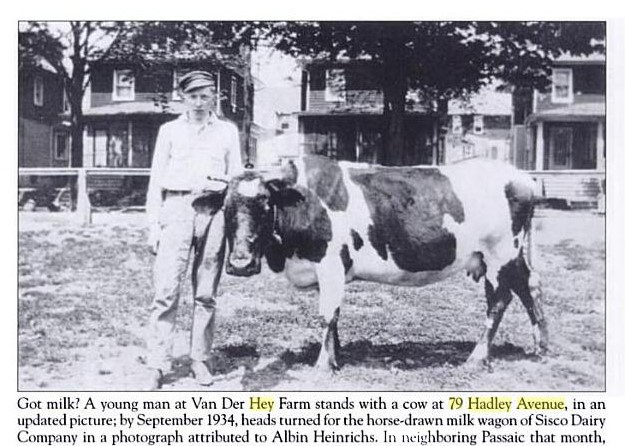Pieter van der Hey Jr.
last update
December 20, 2011
The
following biography about Pieter van der Hey was published in 1922 in the
History of Passaic and Its Environs (William W. Scott, Lewis Hist. Pub. Co., NYC,
pp. 578-579)
The ancient town of Sneek, in the Province of Friesland, Kingdom of Holland, was
for many years the ancestral home of this branch of the Van Der Hey family of
this review. The first representative of this branch of the family was Pieter
Van Der Hey. He was born at the family home, in the town of Sneek, where he
obtained such educational advantages as the schools afforded at that time. Upon
attaining to man's estate, he engaged in the business of manufacturing
plaster-paris for building purposes, and he also was extensively engaged in
burning and making lime for building, and various other uses. Pieter Van Der
Hey, as a result of his business activities, became well and favorably known to
a wide community of people in his native province.
He died at the family home in Sneek January 13, 1900. In his religious
faith he was an earnest adherent of the doctrine of Martin Luther.
Pieter Van Der Hey was twice married, his first union was with Trijntje Bouma,
a native of the town of Sneek, and of this union the following children were
born: Pieter, Jr., of whom further; Eelkje; Reinskje, who died in
early life; and Reinskje (2). The mother of these children died at the
age of twenty-seven years. Pieter Van Der Hey married (second) Maria Esveld, and
they were the parents of the following children: Abe, deceased August
30, 1906; Douwe, deceased October 21, 1903; and Antje
who is living at the present date (1921).
Pieter Van Der Hey, Jr., son of Pieter and Trina (Bouma) Van Der Hey, was
born at the family home in the town of Sneek, Province of Friesland, Kingdom of
Holland, March 9, 1857. He there acquired his education in the schools of his
native town and was confirmed in the Lutheran church at the age of fourteen
years. He remained under the parental roof up to manhood years assisting his
father in the management and care of his manufacturing business, producing
plaster-paris and lime for building and agricultural purposes. Soon after
attaining to the years of manhood, Pieter Van Der Hey, Jr., met the lady of his
choice, and married in his native town, where he finally began business on his
own account, manufacturing plaster-paris and lime, continuing actively engaged
in that line of enterprise up to 1893, in which year he decided to emigrate with
his family to the United States. He therefore arranged his personal affairs and
family interests, and set sail from the seaport town of Rotterdam, bound for New
York City, where he arrived April 5, 1893.
Soon
after his arrival in this country he settled in Passaic, Passaic county. New
Jersey, where he entered the employ of the late Scotto C. Nash, who was at that
time engaged in the nursery and floricultural business in the town of Passaic.
He next identified himself with a Mr. Luigendyk, in Hasbrouck Heights, Bergen
county, New Jersey, with whom he remained identified up to 1890, in which year
he sent for his wife and five children from the Fatherland. Soon after their
arrival, Pieter Van Der Hey, Jr., settled with his family in Belmont, now a part
of the city of Garfield, Bergen county,
New Jersey. where he pursued a number of different occupations up to the year
1899, at which time he located with his family in East Clifton, where he engaged
in the dairy and milk distribution business.
In 1901
Mr. Van Der Hey leased a tract of land for buildings from the late George V.
DeMott, of Clifton. In this undertaking he met with immediate success, as the
result of his painstaking care in the management of his dairy and his
straightforward methods in dealing with his patrons. In 1906 Pieter Van Der Hey,
Jr., purchased a tract of two acres of land where his present barns and stables
and other buildings now stand, on Hadley avenue, Clifton. From this time
henceforth, Mr. Van Der Hey met with increasing success in the conduct and
operation of his business in Clifton and the surrounding community. He died at
the family home on Hadley avenue 79, May 19, 1915, and at the time of his death it
was justly stated that he had left to his children a priceless heritage of an
honorable name.
A copy of a part of page
28 of Clifton: The Boomtown Years
by Philip M. Read

